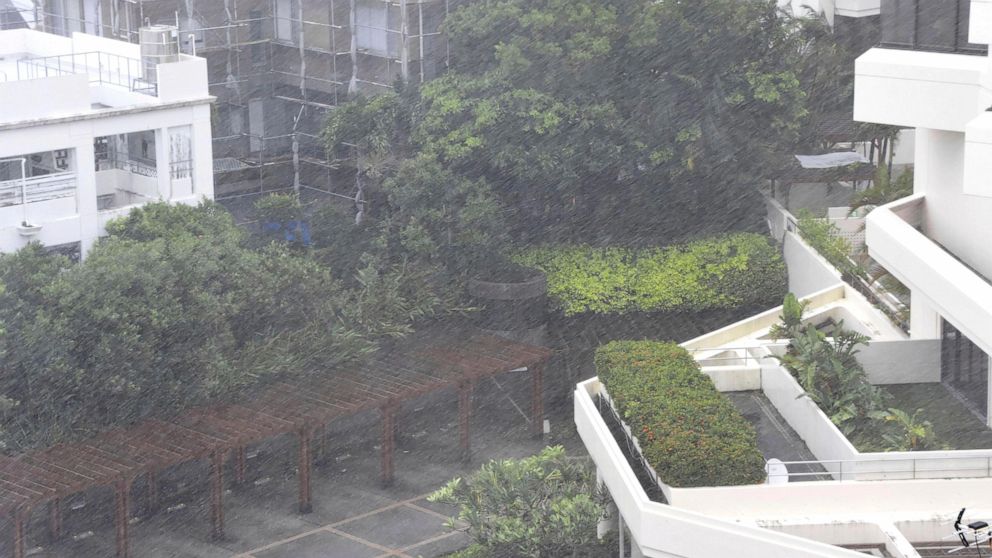Typhoon Ravages Okinawa, Leaving Over 30 Injured and Heads Towards China
In a devastating turn of events, Typhoon Maysak has wreaked havoc on the Japanese island of Okinawa, leaving over 30 people injured and causing widespread destruction. As the typhoon continues its path towards China, authorities are on high alert, preparing for the potential impact it may have on the mainland.
Typhoon Maysak, known as Typhoon No. 9 in Japan, made landfall on Okinawa on Tuesday, September 1st, with winds reaching up to 162 kilometers per hour (100 miles per hour). The powerful storm brought heavy rainfall and strong gusts, causing significant damage to buildings, infrastructure, and agriculture.
The injured individuals were mostly affected by falling debris or were involved in accidents caused by the typhoon’s strong winds. Fortunately, no fatalities have been reported so far, but the extent of the damage is still being assessed.
Local authorities and emergency services have been working tirelessly to provide assistance to those affected. Evacuation orders were issued for thousands of residents in vulnerable areas, and shelters were set up to accommodate those displaced by the storm. The Japanese Self-Defense Forces have also been deployed to aid in rescue and recovery efforts.
The typhoon’s impact on Okinawa’s agriculture has been particularly severe. The island is known for its sugar cane production, and the storm has caused significant damage to the crops. Farmers are now facing substantial losses, further exacerbating the economic challenges already posed by the ongoing COVID-19 pandemic.
As Typhoon Maysak continues its trajectory towards China, authorities there are closely monitoring its path and preparing for potential consequences. The typhoon is expected to make landfall in northeastern China in the coming days, bringing heavy rain and strong winds to coastal areas.
China has a history of dealing with typhoons, but each storm presents unique challenges. Authorities are taking precautionary measures, such as issuing warnings, evacuating residents in vulnerable areas, and suspending maritime activities. The country’s emergency response teams are on standby, ready to provide assistance and support to affected regions.
The impact of Typhoon Maysak in China will depend on its intensity and the specific areas it hits. Coastal regions are at higher risk of storm surges, flooding, and landslides. Efforts are being made to reinforce infrastructure and secure vulnerable areas to minimize potential damage and protect the safety of residents.
Typhoons are a common occurrence in the Western Pacific region, particularly during the summer and early autumn months. These powerful storms can cause significant damage, loss of life, and economic disruption. It is crucial for governments and communities to be prepared, have effective disaster management plans in place, and ensure timely communication to minimize the impact of such natural disasters.
As Typhoon Maysak continues its destructive path, the focus remains on ensuring the safety and well-being of those affected. The road to recovery will be long and challenging, but with the resilience and determination of the people of Okinawa and the support of neighboring countries, affected regions will rebuild and overcome this devastating event.



